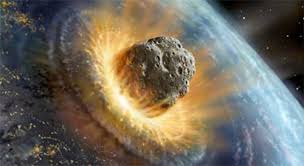The Permian Era began about 290 mya, and lasted until 248 mya. The greatest mass extinction ever on this earth
took place at the end of this 42 million year period. No other extinct
ion has ever killed so much life on the planet. 90% to 95% of oceanic species went extinct or were harmed severely. On land the damage was less severe, but pelycosuars and other species went completely extinct.
 There are several mass extinction theories for this period. One is volcanic activity. The extinctions could be explained by huge amounts of volcanic activity, worse then any has been experienced since written history. Another theory is that a comet or meteor may have hit the planet, causing a chain of events that would have caused changes to temperature and sea levels. Others think that the formation of Pangea upset the balance of climate that happens when ocean waters can affect more of the land surface. No matter what caused the extinction, it was large and important enough to bring an end to the Paleozoic Era. Life on Earth would never look the same.
There are several mass extinction theories for this period. One is volcanic activity. The extinctions could be explained by huge amounts of volcanic activity, worse then any has been experienced since written history. Another theory is that a comet or meteor may have hit the planet, causing a chain of events that would have caused changes to temperature and sea levels. Others think that the formation of Pangea upset the balance of climate that happens when ocean waters can affect more of the land surface. No matter what caused the extinction, it was large and important enough to bring an end to the Paleozoic Era. Life on Earth would never look the same.Similarly, the current mass extinction will leave the world quite different. If present trends continue, at least one half of all species on earth will be extinct in less than a century. The theories are pretty obvious: habitat destruction, pollution, invasive species and climate change, mostly due to humans.

No comments:
Post a Comment